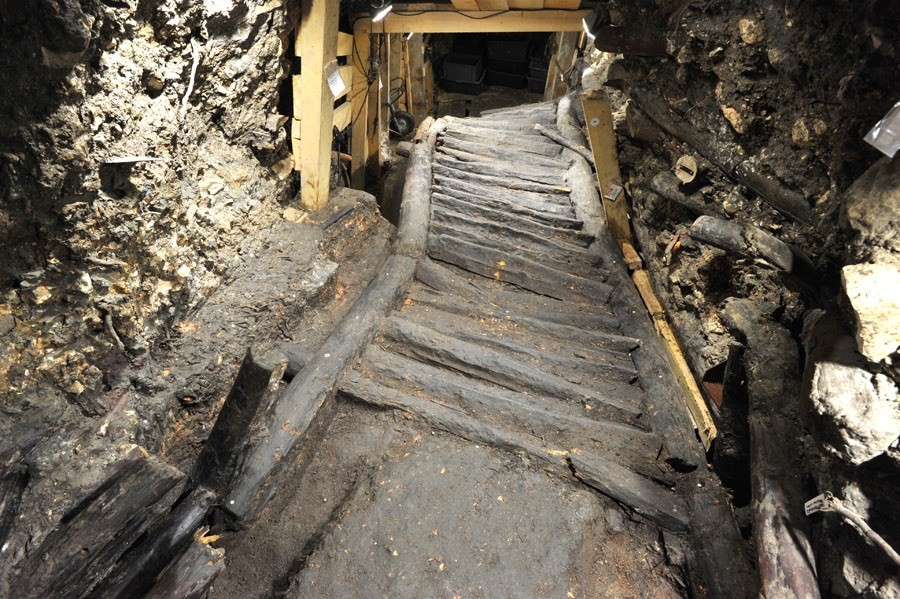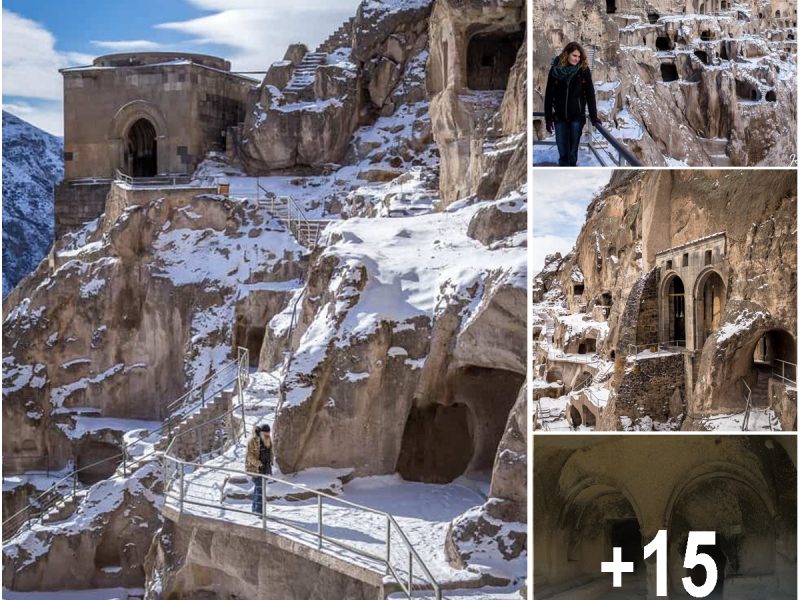Did you know that the oldest wooden staircase in Europe is located at Salzwelten Hallstatt? And that it is almost 3,400 years old? Naturally, nobody trudges up and down those ancient stairs anymore, but you can still marvel at this amazing historical structure.

Image credit: A. W. Rausch/Naturhistorisches Museum Wien
In 2002, the wooden staircase was discovered in the prehistoric part of the Christian von Tuschwerk salt mine located in the picturesque town of Hallstatt in Austria. Investigations – including tree-ring dating – conducted by scientists from the Natural History Museum of Vienna showed that the stairs were used to lug ‘white gold’ out of the mountain in the years 1343-1344 BCE.
The stairway is absolutely unique both regarding its construction and its level of preservation – no similar example is known either from earlier or from more recent times. It had to meet requirements of portability (the staircase had to be a demountable, modular construction), adjustability (the tread angle had to adapt to different shaft inclinations within the mountain) and replaceability. The fact that the steps are 1.2-meter (4 ft) wide allowed for the transport of heavy loads, while also making personnel access and a two-way (synchronous up/down) circulation with carrysacks possible.

Hallstatt mining in the Bronze Age. Image credit: H. Reschreiter – D. Groebner/Naturhistorisches Museum Wien
The staircase extends over 8 meters (26 ft) and was designed as an aid to get over huge heaps of mining waste, upon which it rested. The woodworking traces preserved in the material show that the wood was not chiseled or cut with an adze, but was rather created by transverse cutting using a bronze axe.
Although, as noted above, the construction is absolutely unique and not found in other mines (for instance prehistoric copper mines), the stairway in the Christian von Tuschwerk is not a completely isolated case within the Hallstatt salt mine itself. Parts of such stairs have been discovered in other parts of the mine, suggesting that such staircases were the access equipment of choice for salt mining in the Bronze Age. There were probably two variants, a wide construction supported on the mining waste and used mainly for salt transport, and a narrower version in the shafts for personnel access only.

Image credit: A. W. Rausch/Naturhistorisches Museum Wien
Like with many other artefacts from this site, the salty environment is thought to have preserved microbial growth on the staircase and is responsible for its mint condition. However, when in 2014 it was disassembled and brought to the Museum of Natural History in Vienna for a thorough analysis, fungi immediately started to grow on the wood despite attempts to preserve it.
So, in 2015 it was brought back to Hallstatt and is now on display within the “show-mine“.

The picturesque town of Hallstatt, where the salt mine is located. Image credit: – peperoni –
Let’s hope it will survive many further millennia there, despite the human intervention.

